According to statistics from the World Health Association, fungal lesions on the skin and nail plates are the most common skin diseases. They cause a lot of inconvenience to a person, and his family life violates the usual biological rhythms. Fungus treatment is long and expensive. Therefore, an earlier diagnosis is made, the faster you can start treatment, thus preventing the development of complications.
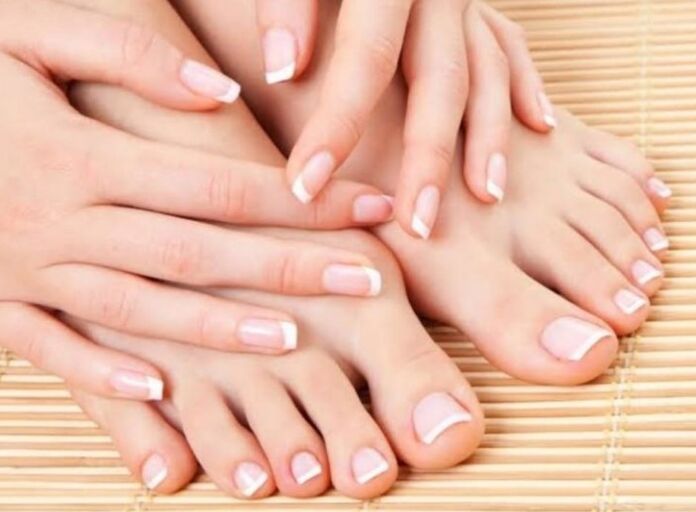
What are the fungi on the legs?
Fungi in the skin of legs and nails is an infectious disease that affects the upper layer of the nail plate of the foot's epidermis and toes. Thyroid disease (the medical name of pathology) occurs due to skin lesions, such as mold, yeast, Candida type mushrooms, skin diseases, skin plants and other microorganisms. The data set of microorganisms can survive and reproduce in the human body, thereby gradually affecting healthy cells. Most commonly, this fungus is found in men because their flora is more suitable for the development of fungal infections.
In the medical classification, there are about 50 different types of fungi. About 85% of fungal lesions are caused by skin bacteria. Fungal Candida is the cause of disease, accounting for about 10% - 12% of cases. The remaining small proportions belong to moldy mildew microorganisms, which do not match personal hygiene rules.
The intensity of the spread and the degree of progression of fungal diseases depend on many factors: the climate that promotes the reproduction of this bacteria; the social conditions in which humans live; age standards; individual characteristics of the body; immunity. Most of the time, people face a fungus after 50 years because they have a weak pH and cannot inhibit the microorganism.
Causes of fungi on legs
The penetration of mold organisms into the skin leads to the development of fungal infection. Due to the presence of proteolytic enzymes, fungi can easily penetrate the surface tissue of the epidermis, and the protein structure allows them to actively develop and remain in their position.
The body's immune system can independently suppress the pathogenic environment, but sometimes this is not enough. On the surface of the skin, there are special bacteria that support the acid-base balance. The alkaline environment is not conducive to developing fungal infections, so mycelium that falls on healthy skin dies after a period of time. However, there are many factors that allow fungi to adapt to the skin:
- Mechanical damage to the skin (cuts, scratches, burns);
- Actively contact household chemicals to reduce the acid-base balance of the skin (using shampoo or gel, feet, deodorant, and prolong contact with water);
- Wearing synthetic materials for a long time can cause active sweating (synthetic socks, barefoot shoes);
- Hyperhidrosis - Increased sweating associated with individual characteristics of the body;
- Establish anatomical features of the foot, such as a narrow gap between the flat feet or fingers (the quality of hygiene in these areas becomes worse), which can lead to poor ventilation of the foot;
- The nails grow too fast, and the nails in the skin grow up;
- Varicocele disease;
- The climate characteristics of the region (moderate or cold climates, you have to constantly wear closed warm shoes);
- age-related immune and hormone changes;
- pathology that affects immune system status (diabetes, HIV infection, obesity, malnutrition);
- Take antibiotics, cell inhibitors, contraceptives;
- Fungicides (gels, napkins, special skin processing solutions) are frequently used.
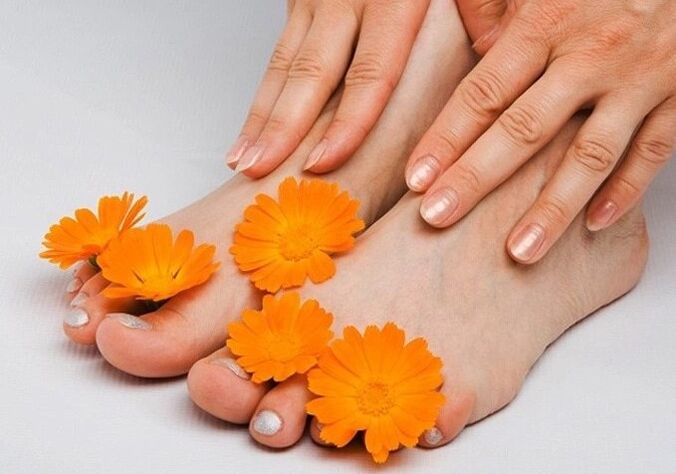
The fungus penetrates the nail plate of the toes as follows:
- Fungus penetrates (cuts) from the free edge of the nail. Therefore, the development of the disease begins with the nail itself, gradually deforming the free edge and deep into healthy areas. This form of this fungus is the easiest and easy to eliminate.
- Dorsal mean (from cuticle). This method of damaging the nail plate is less common. It is only suitable for skin diseases. Back failure requires the nail plate to be damaged as quickly as possible.
- By damaging the proximal roller. This is the rarest and most severe shape of nail fungi. The disease can destroy the structure of the nail method. If you don't start treatment in time, you will lose your nails forever because it won't grow again. The use of ointment, gel and liquid in this fungal form is absolutely ineffective.
In a large risk group, people who frequently visit public places: sports clubs, public showers, swimming pools, beaches with water bodies, saunas or bathrooms. Furthermore, there are high dangers for those who have already worn shoes and clothes or who have changed with friends or acquaintances.
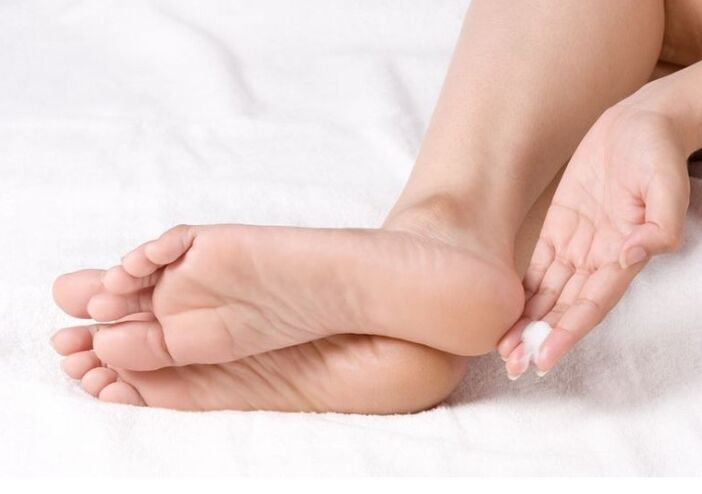
Symptoms of foot fungus and symptoms of nails on the legs
Symptoms and the course of the disease depend mainly on the type of microorganism that causes the disease. Another factor is age, not older people, and the more obvious the symptoms are, the process of damage to the skin and nails will be significantly accelerated.
Despite the various courses of the disease, about the type and characteristics of the bacteria in the human body, you can identify fungal infections through these symptoms:
- In the presence of fungi on the leg skin, tissue compaction occurs, especially on the finger bones. Usually, the skin becomes brighter, dry and starts to peel off. Peeling is accompanied by unpleasant itching. The sign of nail plate lesions is inflammation of the synonym roller. Fungi affecting the skin of the nail roller are accompanied by an inflammation process. When the skin is pressed, a person will feel pain and feel uncomfortable wearing closed shoes.
- If the nails themselves are involved, the symptoms gradually appear. First, you will notice that the color of your nails changes very little, it becomes mudier and covered with a white haze. If the cause of the fungus becomes skin bacteria, it begins to divide. Additionally, the color of the nail plates appears, they turn yellower and then start to be compact. After sealing, the nails deform, the nail cracks begin to rotate, and the nails begin to gradually dye.
As the development of this disease a person feels a little pain and itching and desires to scratch under his nails. Furthermore, for skin fungi, a characteristic unpleasant sour taste is very tangible in a tight and closed space.
Treat skin fungi and nails on the legs
There are significant differences in the treatment of skin and nail plates. Therefore, the presence of both fungi involves complex treatments. For the treatment of skin fungi, ointments, gels or face creams are most commonly used:
- Sulfuric acid ointment. It destroys the protein membrane of the fungus to prevent it from reproduction. The ointment perfectly relieves itching and eliminates inflammation.
- Zinc ointment. It is commonly used in therapeutic complexes of skin fungi, which accelerates the wound healing process.
- Salicy liposuction. This tool is effective against all types of skin fungi. The treatment process was only 2 weeks.
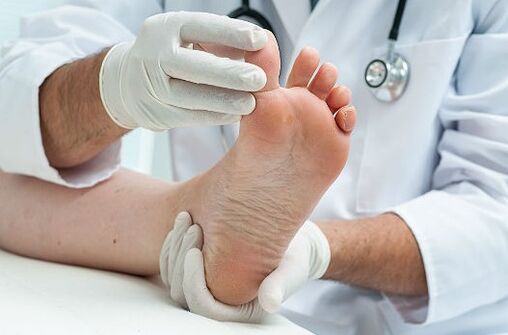
To treat more severe forms of fungal infection caused by moldy mildew, use medications to absorb. The nature of this treatment is based on two principles:
- Destroy fungi in the active development stage.
- Stop the growth of pathogenic bacteria.
Before starting treatment, you should do all the necessary medical research and determine the type of microorganism that causes the fungus. Only based on these data can doctors prescribe effective treatments.
Prevent and treat fungi in the legs through folk therapy
As mentioned earlier, the formation of fungi on the skin and nails under the feet is associated with the decline of the natural level of alkaline balance PH5. 5. Alkaline balance prevents the development of pathogenic bacteria. Therefore, the treatment of fungi is done with folk therapy to increase the acid-base balance of the skin. Effective family struggle fungi at home can be attributed to the following:
- Alkaline bath. In three liters of warm water, dissolve a tablespoon of regular stone salt (or even better salt iodide) and asshole soda. Previously remove the skin and keep the legs dipped in the solution of this legs for 15 minutes.
- Bath based on vinegar and iodine. Add warm water, half a cup of vinegar and 10 drops of iodine. Lower your legs for 15 minutes. Without time, you just wet two swabs in vinegar and wipe each foot with your nails. If the skin has a focus of fungal infection, use iodine lubrication to prevent fungal spread.
- Lemon juice. Squeeze a lemon juice and add a little salt to it. Moisturize a cotton swab in the juice and treat all affected areas of the skin as well as nails. Repeat three times a day.
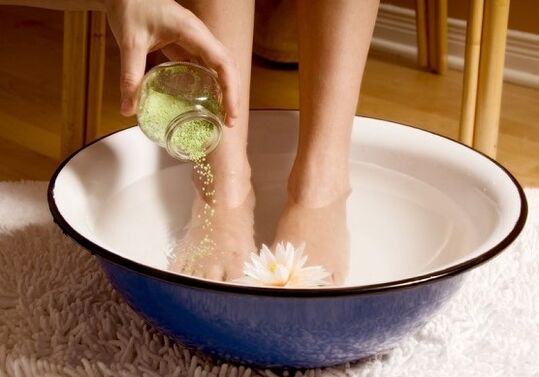
For those who live an active lifestyle, visit sports complexes, swimming pools, this procedure will greatly prevent fungi. For preventive purposes, one weekly procedure is sufficient. To treat a simple form of fungal infection, treatment is performed for one week a day. Even if this approach does not help eliminate fungi, they can slow the development of pathogenic microorganisms so you can visit a dermatologist.
























